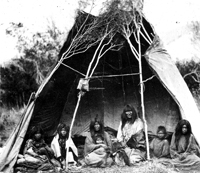 I wrote recently about mergers in the EDA space, mainly from the point of view of engineering which tends to end up being double booked keeping the existing standalone business going while at the same time integrating the technology into the acquiring companies product line.
I wrote recently about mergers in the EDA space, mainly from the point of view of engineering which tends to end up being double booked keeping the existing standalone business going while at the same time integrating the technology into the acquiring companies product line.
The business side of the acquired company has a different set of dynamics. They only have to cope with running the existing business since any integration won’t be available for sale for probably a year after the acquisition. The basic strategy is to take the existing product that has presumably been selling well, and make it sell even better by pumping it through the much larger salesforce of the acquiring company.
The big question is what to do about the salesforce of the acquired company. A big problem is that there are really two types of salespeople that I like to call hunters and farmers. A startup salesforce is all hunters. A big company salesforce is all farmers. Some individuals are able to make the transition and play both roles, but generally salespeople are really only comfortable operating as either a hunter or a farmer.
Hunters operate largely as individuals finding just the right project that can make use of the startup’s technology. Think of a salesperson trying to find the right group in Qualcomm or the right small fabless semiconductor company. Farmers operate usually in teams to maximize the revenue that can be got out of existing relationships with the biggest customers. Think of Synopsys running its relationship with ST Microelectronics.
Given that most of the hunters are not going to become good farmers, or are not going to want to, then most of the acquired company’s salesforce will typically not last all that long in the acquired company. But they can’t all go immediately since they are the only resource in the world that knows how to sell the existing product, that has a funnel of future business already in development and probably have deals in flight on the point of closing. One typical way to handle things is to keep some or all of the existing salesforce from the acquired company, and create an overlay salesforce inside the acquired company specifically to focus on helping get the product into the big deals as they close.
The challenge is always that the existing salesforce doesn’t really want a new product to introduce into deals that are already in negotiation. They have probably already been working on the deal for six months, and they don’t want to do anything to disrupt its closing. Adding a new product, even though it might make the deal larger, also adds one more thing that might delay the deal closing. The new, unknown or poorly known product, might not work as advertised. As I’ve discussed before, big company salesforces are very poor at selling product where the customer isn’t clamoring for it.
So the typical scenario goes like this: the small acquired company salesforce is sprinkled into the big acquiring company salesforce for a quarter or two to make sure that initial sales happen and so that the farmers learn how to sell the product. After a quarter or two, the hunters will either drift away because they find a new startup opportunity, make the transition to being farmers in their own right (they may have been at some point in their career anyway), or else they fail to make the transition and end up being laid off.
